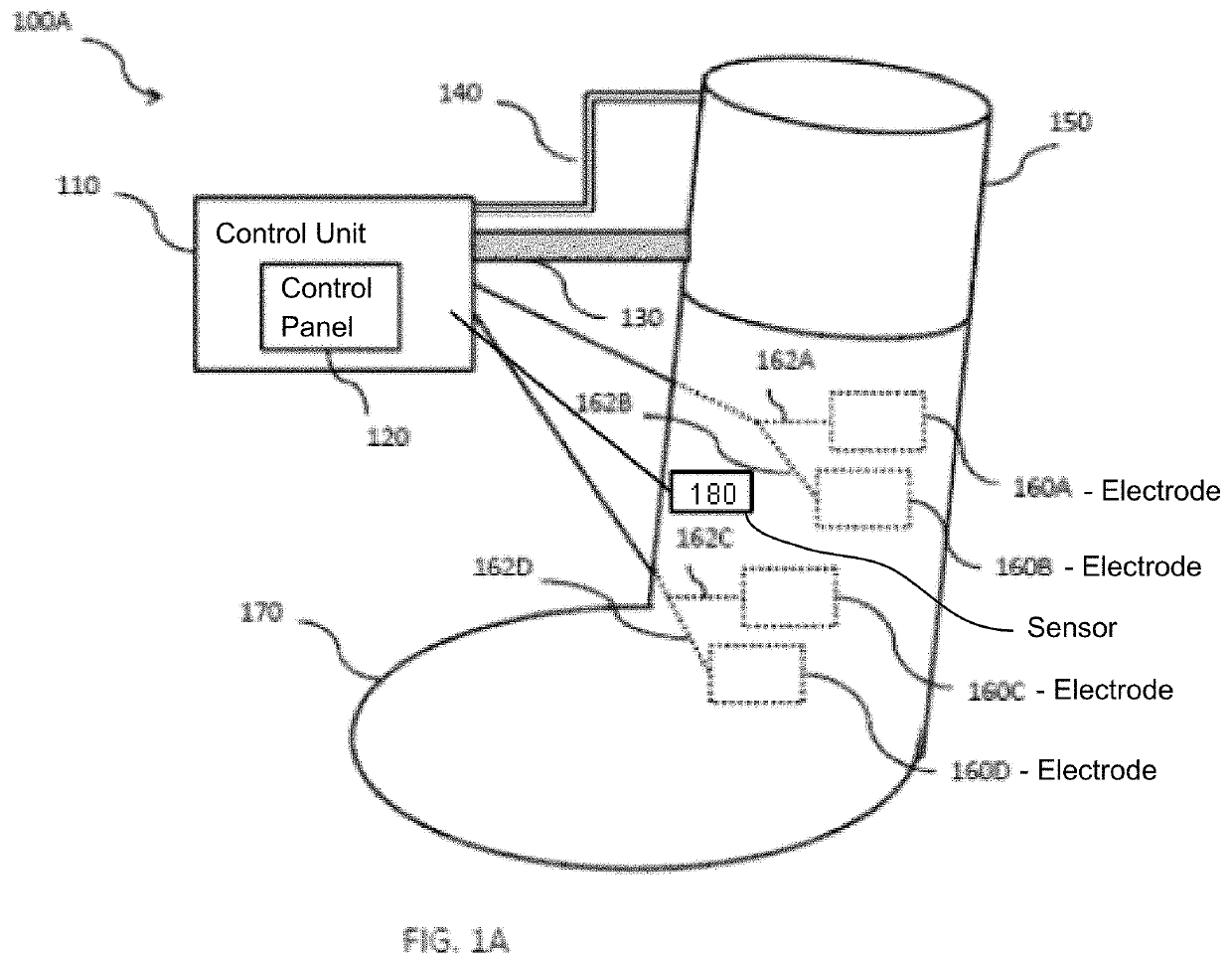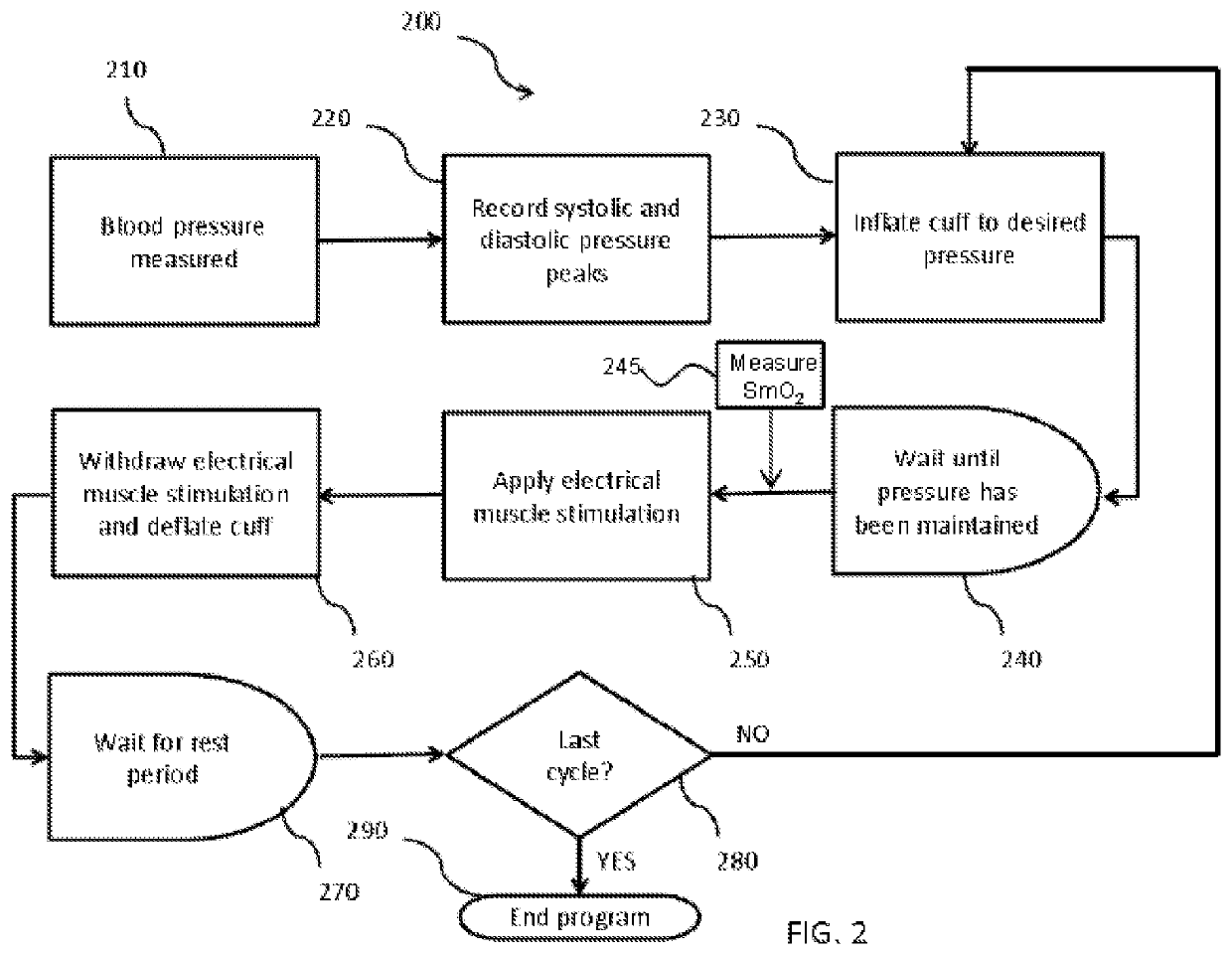Ischemic training apparatus and method
a training apparatus and ischemic technology, applied in the field of ischemic training apparatus and method, can solve the problems of difficult to predict injury and overtraining, unrealized full benefits of physical activity or exercise, and long training schedule interruption, so as to reduce the incidence of overtraining and injury, and increase the recovery from workouts
- Summary
- Abstract
- Description
- Claims
- Application Information
AI Technical Summary
Benefits of technology
Problems solved by technology
Method used
Image
Examples
example 1
Blood Flow Restriction and Muscle Stimulation to Stimulate Alterations in Strength and Hypertrophy
[0081]Effects of blood flow restriction and electrical muscle stimulation for increasing strength and muscle size in humans was determined. The combined stimulus of blood flow restriction and electrical muscle stimulation was compared with each stimulus alone. Participants were assigned to one of four of the conditions detailed below, allowing direct comparisons. Participants trained using the indicated stimulus 4 d / wk, for 32 min each session for a period of 6 weeks. For all conditions including electrical stimulation, the stimulator was used at the highest intensity the participant could tolerate for the duration of the training session. Blood flow occlusion was performed intermittently 4 min on, 4 min off.
[0082]Participant leg strength was tested at baseline, and then participants were randomly assigned to 6 weeks of training according to one of the following four conditions: 1) cont...
example 2
Recovery and Post-Recovery Performance Following Extremely Taxing Exercise
[0098]Experiments were performed to understand if using a combination of blood flow restriction and electrical muscle stimulation was more effective for stimulating muscular recovery (and repeated exercise performance) than doing nothing at all, or employing either modality in isolation. The subjective feelings of leg pain experienced by subjects as a result of exposure to a 40 min session of downhill running (60% of VO2 max, −12° decline), which accentuates the eccentric muscular contractions that occur with each step, was also tracked.
[0099]Participants (n=20) performed a 10 km simulated time trial on a cycle ergometer within the lab. Following this, participants were exposed to fatigue (and muscle soreness) inducing exercise, in the form of downhill running and then randomized to one of four conditions: 1) control; 2) electrical stimulation only (TEMS); 3) blood flow restriction only (FFR); or 4) combined b...
PUM
 Login to View More
Login to View More Abstract
Description
Claims
Application Information
 Login to View More
Login to View More - R&D
- Intellectual Property
- Life Sciences
- Materials
- Tech Scout
- Unparalleled Data Quality
- Higher Quality Content
- 60% Fewer Hallucinations
Browse by: Latest US Patents, China's latest patents, Technical Efficacy Thesaurus, Application Domain, Technology Topic, Popular Technical Reports.
© 2025 PatSnap. All rights reserved.Legal|Privacy policy|Modern Slavery Act Transparency Statement|Sitemap|About US| Contact US: help@patsnap.com



